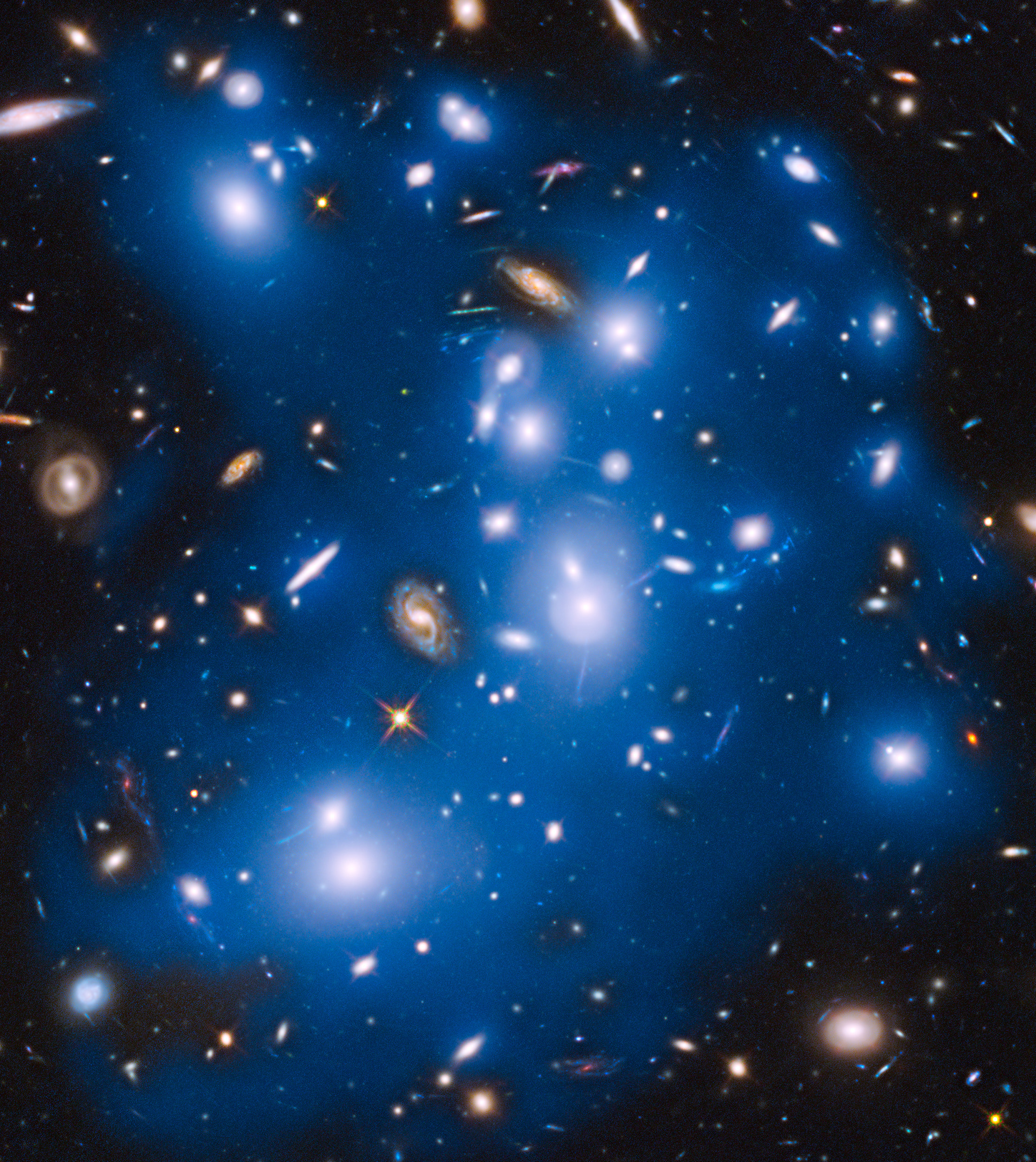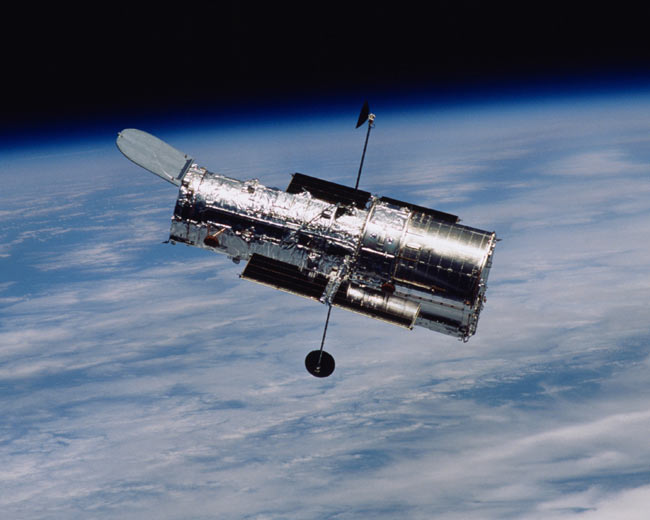'Ghost Light' of Long-Dead Stars Haunt NASA's Hubble Telescope

NASA is adding a cosmic twist to Halloween with an unexpected find by the Hubble Space Telescope: eerie "ghost light" from the remains of a multi-galaxy massacre.
As many as six galaxies roughly the size of our own Milky Way met their grisly deaths at the hands of gravity. The celestial bloodbath occurred over a period of 6 billion years in a group of galaxies 4 billion light-years away. NASA unveiled Hubble's false-color view of the "ghost light" Thursday (Oct. 30), just in time for Halloween.
Stars from those galaxies, now ripped from their cosmic homes, were seen emitting a "faint, ghostly glow" by the Hubble Space Telescope. In an ominous coincidence, the region in question — officially known as Abell 2744 — is nicknamed "Pandora's Cluster." [The Spookiest Space Photos of All Time]
"The Hubble data revealing the ghost light are important steps forward in understanding the evolution of galaxy clusters," Ignacio Trujillo of The Instituto de Astrofísica de Canarias (IAC), Santa Cruz de Tenerife, Spain, said in the NASA statement. "It is also amazingly beautiful in that we found the telltale glow by utilizing Hubble's unique capabilities."
The stars were found wandering region of space where their parent galaxies were once "pulled apart like taffy," NASA officials wrote in the statement. The researchers who discovered the eerie light are confident that studying these stars can provide information about what happened in side the cluster.
The researchers who discovered the ghostly glow don't appear to be frightened by their discovery.
"The results are in good agreement with what has been predicted to happen inside massive galaxy clusters," said Mireia Montes, the study's lead author who is also with the IAC, in the statement.
Get the Space.com Newsletter
Breaking space news, the latest updates on rocket launches, skywatching events and more!

The ghostly results were published in the Oct. 1 issue of the Astrophysical Journal.
Email Calla Cofield at ccofield@space.com or follow him @callacofield.Follow us @Spacedotcom, Facebook and Google+. Original article on Space.com.
Join our Space Forums to keep talking space on the latest missions, night sky and more! And if you have a news tip, correction or comment, let us know at: community@space.com.

Calla Cofield joined Space.com's crew in October 2014. She enjoys writing about black holes, exploding stars, ripples in space-time, science in comic books, and all the mysteries of the cosmos. Prior to joining Space.com Calla worked as a freelance writer, with her work appearing in APS News, Symmetry magazine, Scientific American, Nature News, Physics World, and others. From 2010 to 2014 she was a producer for The Physics Central Podcast. Previously, Calla worked at the American Museum of Natural History in New York City (hands down the best office building ever) and SLAC National Accelerator Laboratory in California. Calla studied physics at the University of Massachusetts, Amherst and is originally from Sandy, Utah. In 2018, Calla left Space.com to join NASA's Jet Propulsion Laboratory media team where she oversees astronomy, physics, exoplanets and the Cold Atom Lab mission. She has been underground at three of the largest particle accelerators in the world and would really like to know what the heck dark matter is. Contact Calla via: E-Mail – Twitter
